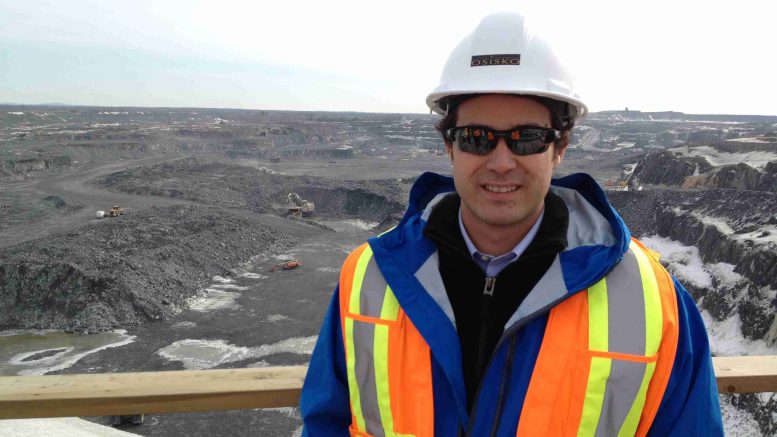
O3 Mining has released the results of four holes completed at the Alpha property within its Central Cadillac group of holdings in Quebec.
Of the four holes reported in the most recent release, three are from the Bulldog zone which has now been traced over 500 vertical metres and over 100 metres to 200 metres along strike.
Drill highlights from Bulldog include 32.8 metres of 1.9 g/t gold, 5.1 metres of 2.9 g/t gold and 1.8 metres of 2.1 g/t gold with additional assays pending.
Drill highlights from Bulldog include 32.8 metres of 1.9 g/t gold, 5.1 metres of 2.9 g/t gold and 1.8 metres of 2.1 g/t gold with additional assays pending
These latest intercepts hit Bulldog mineralization starting at depths of 300 metres to 500 metres.
Three rigs are active at Alpha; one at Bulldog and two at the Epsilon zone.
The Alpha property is the primary holding within the company’s Central Cadillac group.
A 25,000 metre drill program is underway at the site, which is just east of the city of Val d’Or.
The Cadillac Break, a regional fault zone, underlies the project with additional settings identified prospective for gold mineralization, including shear zones and massive sulphide units.
To date, mineralized zones at Alpha have been identified within a 5-km strike length.
After consolidating gold properties in Ontario and Quebec in the second half of last year, O3 is drilling a total of 50,000 metres this year, including 25,000 metres at Alpha.
The company holds a total of 4,600 sq. km of ground in the two provinces. Its current focus is on the Central and East Cadillac and Malartic properties surrounding Val d’Or.
At East Cadillac, with three targets identified to date, mineralization remains open. Malartic covers sections of the Norbenite and Marbenite shear zones.
Across all of its holdings, O3’s measured and indicated resources total 3.6 million oz. with a further 1.5 million oz. inferred.
(This article first appeared in the Canadian Mining Journal)